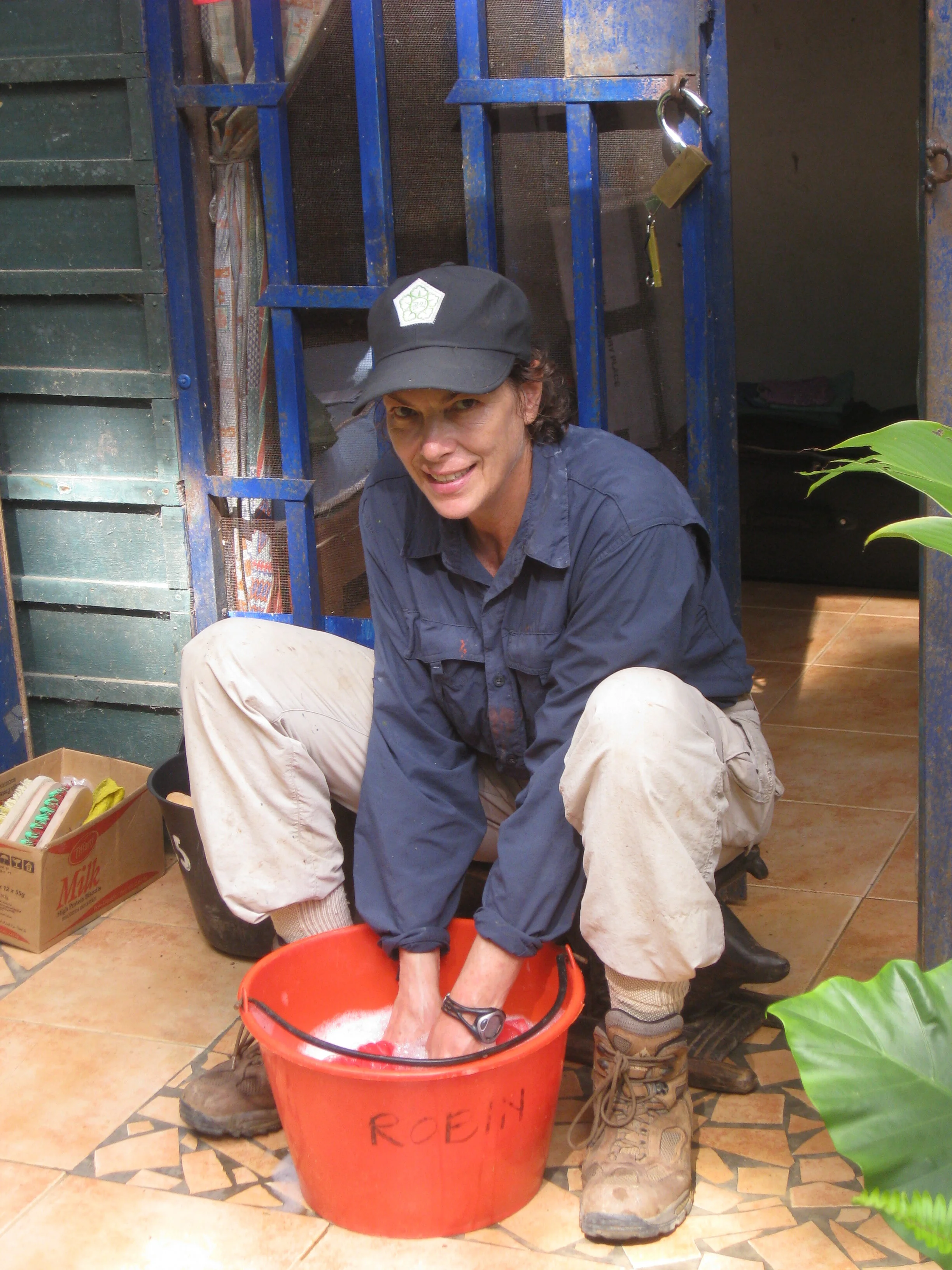Contrast = Gratitude
By Robin Huffman, Safina Center Fellow
The other day, a friend and I were discussing music, and how essential the spaces between the notes are to a holistic experience of a piece. It’s the counterpoint and contrast of the notes and the silent spaces that makes the music.
And true of a life. For me, I discovered that leaving the corporate world for art and primate conservation, spending a third of my time in Africa with primates, created those spaces between the notes and offered a fullness to my life.
Mottled sky at Ape Action Africa. Photo: Robin Huffman
In doing so, I also found that contrast can equal gratitude. Contrast is a powerful thing. Change of scenery intensifies experiences. It’s why city dwellers have a place in the mountains or at the shore. It’s why we take vacations to places that look nothing like where we just came from, and have hobbies markedly different from our jobs.
These contrasts are like the intervals, the spaces between notes, that make the notes themselves all the more incandescent and meaningful.
I appreciate everything more and have heightened awareness of my surroundings, which in turn magically expands my sense of time. This formula I’ve stumbled upon allows me to live in gratitude much of the time. A quote I once read comes to mind, “if everything we had were taken away from us and then given back…. we’d think ourselves the luckiest person on earth.”
In my two worlds:
I’m grateful for city life where every cuisine in the world is at my fingertips.
But I’m also grateful for a single morsel of cheese and a baguette that doesn’t have ants in it.
I’m grateful for being connected with the world through technology.
I’m grateful when I’m not.
I’m grateful for a glamorous evening on the town.
I’m grateful for a secluded evening at the primate sanctuary in the African rainforest, which allows me to be completely present…especially if I’m caring for an orphaned monkey baby.
Evening at the primate sanctuary in the jungle. Photo: Robin Huffman
I’m even grateful for washing machines, though I also relish doing my laundry in a bucket, sitting low on a stool, scrubbing away while greeting my fellow sanctuary workers, building my biceps wringing out the clothes, then arranging them strategically on the line to optimize drying (because tumba flies lay eggs on damp clothes, which become maggots growing under our skin, that we then must extract).
Washing machine at Ape Action Africa. Photo: Robin Huffman
With fewer distractions at the primate sanctuary, I reflect more.
Tumba Yy maggots. Photo: Robin Huffman
On one occasion, in this grateful frame of mind, while walking along the rust-colored dirt path at the primate sanctuary, I had an insight. It occurred to me that an urban corporate lifestyle envelops us in human-made environments - in a car, office building or home, what we stand, sit, work and recline on. Manufactured walls, lighting from factory fixtures with calibrated spectrums and uniformity. The sounds - city mechanical noises vs the jungle’s organic musicality.
The path at Ape Action Africa. Photo: Robin Huffman
And then a lovely thing happened. I suddenly disappeared, absorbed by the jungle. I’d simply become an element of the flora and fauna that populates it. No less and certainly no more. An organism that took in and expelled gasses, absorbed sunlight and humidity. Living and dying just like every plant and creature around me. It was a humbling experience and a beautiful one.
“Two jungles.” Photos: Peter Wynn Thompson (left) and Robin Huffman (right)
I love both worlds, and am grateful for them. And you? What are you grateful for?






